Tajna River Industries is a continuous process chemical industry that manufactures bleached lac, shellac flakes, shellac wax and seedlac. In addition to production floors, the plant also has a water treatment plant, chiller units, a steam producer, a sodium hypochlorite preparation plant, a gasifier (wood to producer gas) and diesel generator (DG) sets.
To improve its system by reducing inputs, manpower, power consumption and downtime, Tajna River Industries decided to automate and control the manufacturing unit with a custom system. The chosen system was National Instruments’ LabVIEW software that created an automation and control system that met the plant’s application needs. This article summarizes the improvements provided by the new software.
Speed Control of Diesel Generator Sets
The DG sets are powered by a mixture of diesel and producer gas created in an 80-kilowatt gasifier. The engine speed increases as more gas is input, so the diesel fuel intake must be reduced to achieve constant engine speed and line frequency. The engine speed is detected by using the software to find the frequency of the tone generator output attached to the engine shaft. The closed-loop control system generates signals through the multifunction software system’s data acquisition (DAQ) device to control diesel flow in the engine. The output from the DAQ device is applied to a small DC motor through a DC regulator IC that screws or unscrews the generator’s fuel control screw.
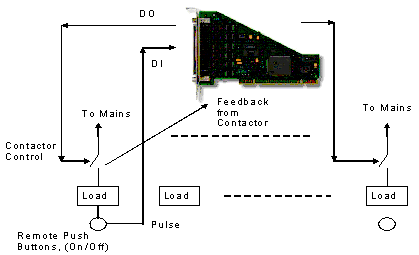 |
Figure 1. Closed-loop speed control of DG set |
Power Factor Control
The system performs power factor sensing through the analog signal from a power factor transducer. The signal is fed from the multifunction I/O DAQ device to the control system built into the software. The control system has a set of digital outputs that switches 24 relay switches on and off. The relay switches control contactors that add or remove 15 capacitors in a capacitor bank. The power factor remains near the desired 0.92 set point.
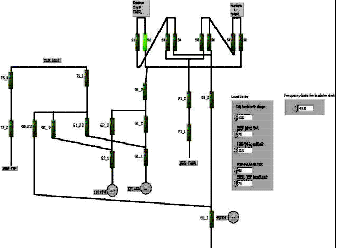 |
Figure 2. Closed-loop power factor control |
Automatic Control of Chiller Machine
Previously, the system used a programmable logic controller (PLC) for the chiller machine, but spare parts were costly and problems occurred with the PLC main card. The decision was to replace it with a software system. Operators monitored the temperature at five points in the machine. The chiller machine is energized by steam and controlled by first generating a ramp output during a 12-minute span from the DAQ device attached to a system that supplies steam to the high-temperature generator of the chiller machine. Using the software, operators implemented automatic switch control to open and close the steam valve from 100 percent to 0 percent. Water is cooled to 4 C, and the steam control valve is modulated depending on the current temperature.
Electric Load Management
The total connected load is 75 kVA and 85 kVA in two units. The plant operators must manage the load to avoid going beyond the maximum limit or exposing the system to instability. The same load management system that was used to remove the possibility of sudden loading on the DG sets (125 kVA, 110 kVA, 40 kVA, or 20 kVA depending on load needs) when attempting to start several loading units at the same time was used in this process. The plant runs 80 subunits through this power supply. The operators introduced a scheme in which each piece of equipment released a pulse for a duration of its startup. This varied depending on the type of equipment—fans, centrifuges, pumps or motors. Sequence starting was implemented on a first come, first serve basis using digital I/O cards. The software system was used to log the starting and stopping of different units.
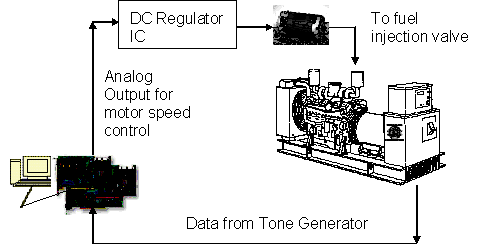 |
Figure 3. Electric load management |
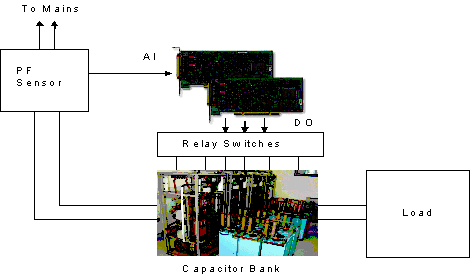 |
Figure 4. Sample VI |
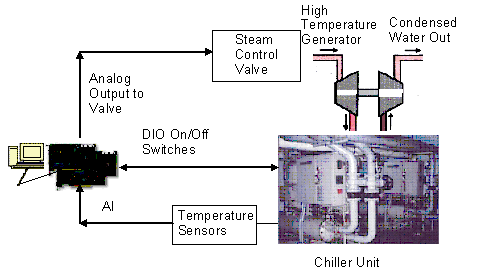 |
Figure 5. Sample VI |
Maximum Demand Control
With maximum demand control, overload of the multiple power sources is prevented. Before starting a load, operators verified the running load and load limit of the power supply. The load that added to start a particular load, the running load of the source and the load limit of a power source were known. Based on these simple calculations made in the software, the system accordingly gives permission to start on a particular source. If the power supply changes, then the changed load limit and running load are updated. Following a similar algorithm to account for frequency considerations for DG sets, a starter cannot start a DG set if it is running on low frequency.
Plant Maintenance Scheduling
Because the system keeps a record of the starting and stopping of each unit, operators can easily calculate the number of run hours for each piece of equipment. Plant maintenance can be scheduled based on the run hours. A maintenance alarm activates after a set number of run hours. Online condition monitoring is used in other areas, as well. For example, the temperature and vibration of bearings and motors can be checked to determine if they need maintenance.
System Benefits
This system had several benefits—such as cost reduction, improved monitoring and control of the plant and machinery, manpower reduction, power system stability, savings in power tariff and better care of the equipment through the plant maintenance system. All these benefits could be achieved through the system. It also made it possible to use the existing hardware which otherwise would not have been used.
System Success
LabVIEW training taught the operators good programming practices, which drastically reduced development time (see Figures 4 and 5 for sample VIs). The schemes can be applied to any continuous process industry—such as paper, textile and chemicals and offer many benefits.

